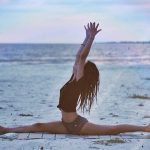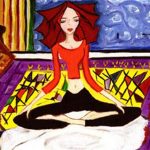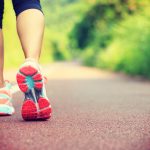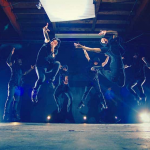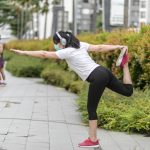Have you ever woken up in the morning and felt stiff and sore? Well, yoga is an extremely useful method to gain flexibility. Many gurus, saints, and even world-class athletes use these asanas, or yoga poses, to improve their bodies. Even the less flexible can try some of these simple techniques to conserve energy and build muscle. Whether it’s after a long hike, a grueling basketball game, or even a tough cross-country run, your body, especially your muscles, tends to get sore. But don’t worry, these ten yoga asanas will improve your flexibility and relax your muscles in no time!
The latest statistics even show that improving flexibility is the most popular reason to start yoga, and research proves it’s one of the biggest benefits of regular practice. However, there are several asanas that can help make you more flexible than others. So without further ado, here are the 10 best yoga poses for improving flexibility:
1. Adho Mukha Svanasama
(dog upside down)

The Downward Dog is one of the most popular stretches and is known to relieve fatigue and stiffness in the legs and heels. The words “Adho Mukha” means “downward facing”, while “Svana” means “dog” and asana means “seat” or “pose”. This pose depicts a stretching dog with the head and forelegs down. As a runner, this is one of my favorite poses to relax my legs after a hard workout and improve my flexibility. Adho Mukha Svanasana is especially beneficial for sprinters as it helps develop speed and lightness by improving blood circulation and strengthening the abdominal muscles.
2. Urdhva Mukha Svanasama
(dog upside down)
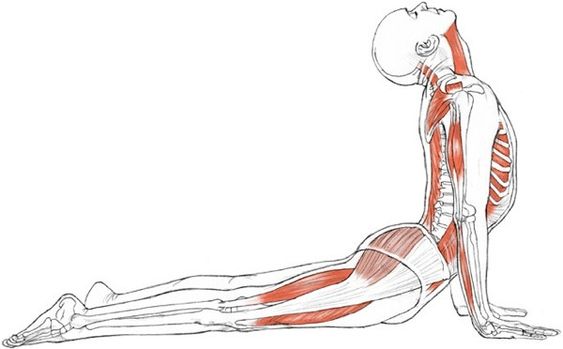
Urdhva Mukha means “to have the mouth up”, and Svana means “dog” (as indicated in number 1). This pose mimics a lying down dog and helps revitalize the spine. It is recommended for people with back pain or body aches. Upward Dog strengthens the spine, and expanding the chest during this pose helps the lungs expand, helping you gain more oxygen with each breath. As an athlete, this exercise has really helped regulate my breathing while running and improved my flexibility.
According to BKS Iyengar Light on Yoga guide, staying in this pose for half a minute to a minute with deep breathing is key to getting the most out of this stretch.
3. Paschima Ottanasana
(Front fold)
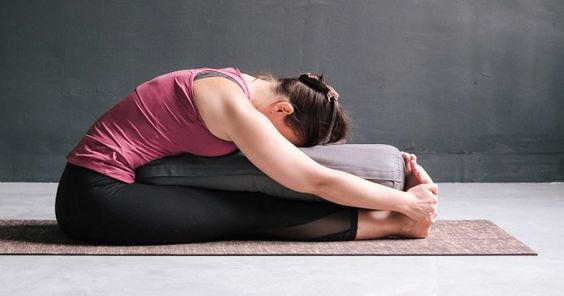
by BKS Iyengar Light on Yoga states that Paschima “literally means west”. This pose consists of stretching the back and the head completely towards the toes. According to the health benefits of Uttanasana by CNY Healing Art, Forward Fold Pose stretches the hips and hamstrings, strengthens the thighs and knees, keeps the spine strong and flexible, and relieves tension on the neck and back. back. It also calms the mind and soothes the nerves while reducing stress, anxiety and depression.
4.Ustrasana
(Camel pose)
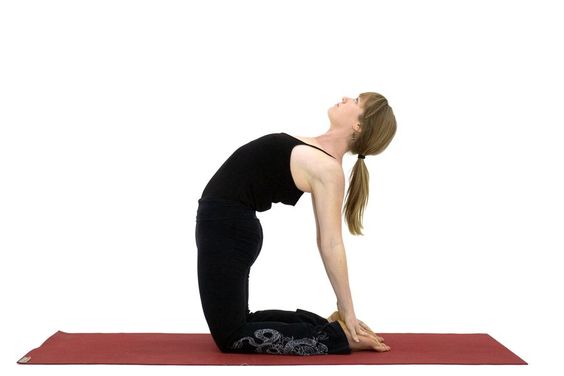
Camel Pose (Ustra) is one of the most beneficial poses for relieving back pain. According to Yogi Approved, this pose is called the camel pose because during this stretch, the back bends or curves in the shape of a camel’s hump. The Yoga Journal states that the benefits of this pose are that it stretches the whole body, ankles, thighs, and groins. It also stretches the abdomen, chest and throat, while strengthening back muscles and improving posture.
Personally, this pose is one of my favorite stretches as it has had a major impact on my posture as it helps me maintain a straight back and a broad chest while running.
5.Uttanasana
(Standing half forward bend)
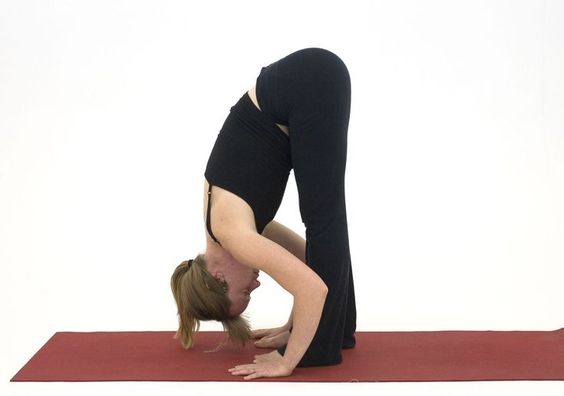
“In Sanskrit, the word Uttanasana includes a Ut, which means “intense”, and the verb tan, which means “to stretch.” (Yoga Journal) This stretch is performed standing with the back and head bent straight down towards your toes, with your arms grasping your feet.Some benefits of this pose are that it stretches the hamstrings and back, improves digestion, quiets the mind, and relieves headaches.This pose also stretches the tissue connective tissue when falling forward and alleviates anxiety.
As stated earlier, not only is this asana a stretching pose, but it can also reduce a great amount of anxiety. Whenever I’m about to run a race and I’m nervous, I always try to calm my mind by taking deep breaths and performing this asana. This pose will help you stay focused and stay calm. When you are nervous and trembling before the greatest moment of your life, remember Uttanasana; it can be your greatest ally.
6. Padhangusthasana
(Big Toe Pose)
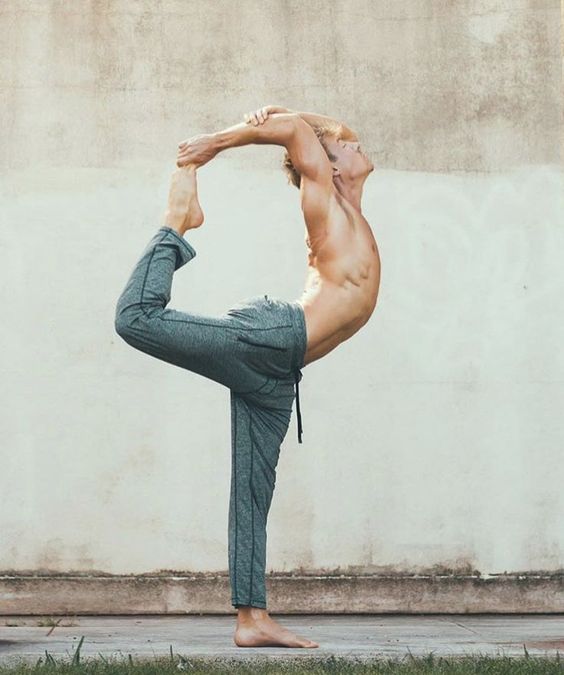
“Big Toe Pose is an asana from the Ashtanga yoga tradition that is performed while standing,” writes YogaTeket. According to BKS Iyengar light on yoga, the name Padhangusthasan comes from the Sanskrit word “Padha”, which means foot, and “Angusthana” which means “thumb”, which implies “big toe”. Big toe pose is not necessarily about stretching the big toe itself. This pose is more focused on stretching the hips, thighs, calves, and hamstrings.
According to Yoga Journal, some benefits of this stretch are that it strengthens the thighs, stretches the hamstrings and calves, and improves digestion. This asana also stimulates the liver and kidneys. A few teenagers might know that LeBron James and Shaq O’Neal are yoga enthusiasts and to quote King James, “Yoga is the secret to endurance.”
7. Anjaneyasana
(Low lunge position)
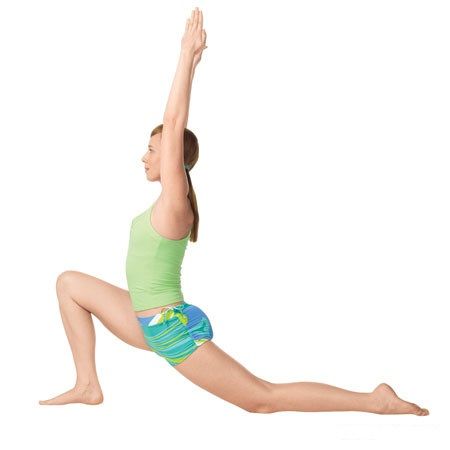
The Low Lunge Pose or Crescent Lunge exercises the muscles of the entire body and is known to “provide a powerful stretch to the groin, quadriceps, and iliopsoas of the rear leg.” (International Yoga) The word Anjaneyasana comes from the Sanskrit word “Anjaneya”, which means “praise”. According to CNYhealingarts, this pose has many benefits, including releasing tension in the hips, strengthening your knees, stretching your hamstrings, groin, and quadriceps (as mentioned earlier), and developing mental focus. The next time you watch an NBA or NFL game, notice how most athletes perform the Low Lunge Pose while warming up!
8. Bhekasana
(Frog position)
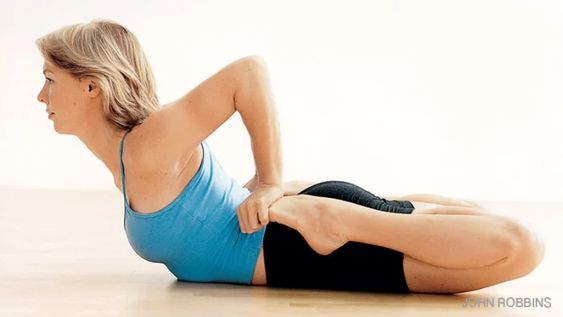
“Bheka” in Sanskrit means “frog”. The stretch is performed using some of the key features of a frog. In this pose, you lie on your stomach and bend your knees towards your head and lift your neck off the floor. Bheknasana is one of the asanas that has the greatest impact on the body in terms of flexibility. According to Fitsri, Bhekanasa improves overall body flexibility and has the greatest impact on the legs, back, shoulders and neck. It also removes stiffness from the knees.
This asana is also very useful for toning the trunk. I am not flexible enough to perform this asana, but for me this stretch can be extremely beneficial. As a runner it is very important to maintain a strong core and this asana is helpful in maintaining a stable core. This pose is great for gymnasts because this stretch eliminates stiffness in all parts of the legs, including the ankles. Before performing this pose, I would practice the other poses so that you are more flexible and have some experience.
9.Marjariasana
(Cat position)
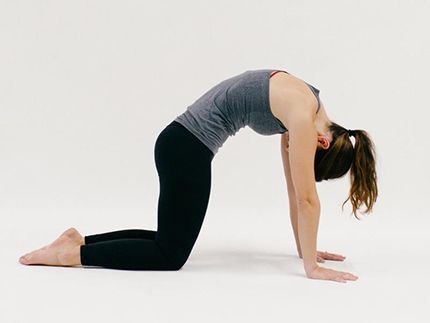
Marajariasana is one of the most unique stretches because it helps strengthen the arms and wrists. “Marajari” means “Cat”, and this pose involves a person who is on their knees and on their arms, with a curved back, like a cat (hence the name, “Cat Pose”). The stretch provides a massage to the spine and stomach, according to Yoga Journal. Some benefits of this asana are that it makes the spine flexible, strengthens the arms, wrists, and shoulders (as mentioned earlier), helps relieve back pain, improves digestion by massaging the digestive organs, and stretches the back. and abdominal muscles. I marvel at my cat, Sir, who performs this pose with ease every time he wakes up from a nap!
10. Matsyasana
(Fish Pose)
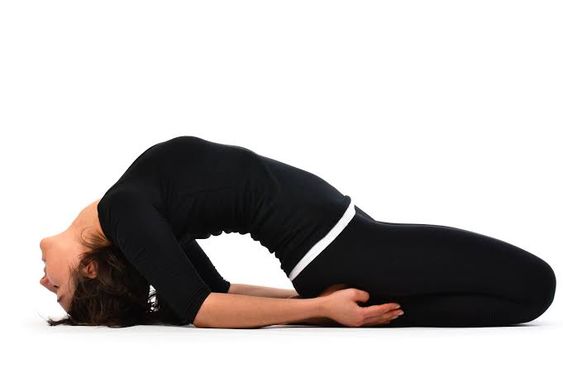
Matasyana, or Fish Pose, is often known to stretch the ribs and open the throat. This pose is a lying or backbend pose. Imagine sitting cross-legged while lying on the floor with your back bent and your chest puffed out. This would be a perfect way to describe the pose of the fish. CNYhealingarts states that the benefits of this pose are that it stretches your deep hip flexors and intercostals (muscles between the ribs), and stretches and tones the front of your neck, including your abs. It also relieves tension on your back, neck, nose and throat and stimulates the organs in your belly and throat.
Get your yoga going!
Overall, improved flexibility can lead to less stiffness, less muscle soreness, and less injury. Each of these asanas has its own story and its own way of improving your flexibility. If you’ve never tried yoga before, now is the time to put on your yoga pants and practice some of these poses. After strenuous or acute activity, you won’t have to worry anymore. Just remember these 10 asanas, and before you know it, you’ll be feeling completely relaxed and refreshed with zero stiffness!

